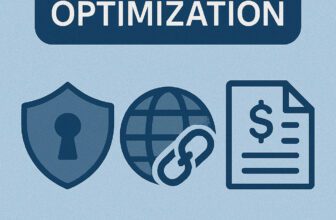Risk Modeling — Technical, Economic & Governance Risks
DeFi Risk Modeling
Identifying, Assessing, and Mitigating Technical, Economic, and Governance Risks in DeFi Protocols
-
Level
Professional
-
Duration
~1 Hour
-
Lesson
6 of 10
-
Course
DeFi Mastery Track
-
Status
✅ Completed
📘 Lesson 6: Risk Modeling — Technical, Economic & Governance Risks
Intro
DeFi risk modeling is essential to secure decentralized financial protocols against technical failures, economic attacks, and governance vulnerabilities. As DeFi systems scale and intertwine with high-value assets, understanding how to detect and manage these risks becomes critical. This lesson equips you with the tools to analyze, quantify, and mitigate risk vectors across every layer of DeFi infrastructure.
🔍 Overview
In this lesson, we dive into the three major domains of risk that shape DeFi ecosystems:
- Technical risks such as smart contract vulnerabilities, oracle manipulation, and composability bugs.
- Economic risks, including price manipulation, flash loan attacks, and liquidity crises.
- Governance risks, from vote hijacking to plutocratic control.
You’ll explore historical case studies, simulation tools, and protocol defense mechanisms, while gaining insights into how risk-aware architecture protects against cascading failures and black swan events.
📋 What You’ll Need to Know
1. Prerequisites:
- Understanding of DeFi protocols and tokenomics
- Familiarity with smart contracts, governance models, and oracles
- Basic knowledge of game theory and incentives
2. Target Audience:
- DeFi architects and protocol developers
- Risk analysts, auditors, and DAO governance designers
- Institutional stakeholders evaluating protocol resilience
📚 Lesson Content
DeFi operates without centralized failsafes, making risk modeling an integral part of system design. Poorly understood or underestimated risks have led to multi-million-dollar losses. Effective mitigation starts with classification, then modeling, followed by simulation and response frameworks.
✍️ Content
Technical Risks
At the protocol level, vulnerabilities in smart contracts can result in permanent asset loss. These include:
- Reentrancy bugs, exploited famously in The DAO hack
- Unchecked arithmetic overflows, like in the early days of Compound
- Oracle manipulation, where attackers control or influence external data feeds to trigger false states or profit from liquidation thresholds
- Flash loan exploits, enabling attackers to borrow large sums with zero upfront capital and execute complex attack vectors within a single transaction
Mitigating technical risk involves formal verification, security audits, modular code architecture, and bug bounty programs. Defense-in-depth is essential — single-layer safeguards are rarely sufficient in adversarial environments.
Economic Risks
Economic attacks exploit the assumptions and incentives embedded in a protocol’s financial logic. Examples include:
- Price manipulation through thin liquidity pools
- Front-running and MEV (Miner/Maximal Extractable Value)
- Liquidity cascades, where a sharp drop in TVL leads to protocol instability
- Interest rate manipulation and mispriced collateral during extreme volatility
Simulation tools like Gauntlet, Chaos Labs, and RiskDAO model stress scenarios to optimize protocol parameters such as collateral ratios, liquidation penalties, and incentive curves. Economic resilience must be stress-tested under multiple market conditions, including edge cases.
Governance Risks
Governance exploits are less visible but equally dangerous. As protocols decentralize, power can become concentrated among whales or exploiters. Common risks include:
- Vote-buying and governance capture
- Time-lock exploitation where malicious proposals pass unnoticed
- Low-voter participation, leading to undersecured protocol control
Projects like Compound, Aave, and MakerDAO have faced governance vulnerabilities, spurring innovations like delegate vaults, quorum thresholds, and time-delayed execution to ensure deliberation and oversight.
Modeling Frameworks & Tools
Modern DeFi risk modeling leverages both qualitative and quantitative frameworks:
- Qualitative: Threat modeling, governance audits, game theory analysis
- Quantitative: Monte Carlo simulations, Value at Risk (VaR), on-chain simulation environments
- Risk dashboards and open-source tools like DeFiSafety, LlamaRisk, and TokenLogic help community-driven protocols monitor risk in real-time.
✨ Key Elements
- Smart Contract & Oracle Risks
- Flash Loan & Liquidity Attacks
- Governance Exploits & Delegation Pitfalls
- Game Theory & Risk Simulation
- Risk Mitigation Frameworks
- Real-World Case Studies
🔗 Related Terms:
- Reentrancy
- MEV (Maximal Extractable Value)
- Flash Loans
- Protocol Governance
- Risk Simulation
- Oracle Attacks
- Liquidity Mining Risks
📌 Conclusion
Risk is the cost of innovation — but unmanaged risk is the enemy of trust. By building layered protections, embracing simulation tools, and promoting transparent governance, DeFi can become more robust and antifragile. Risk modeling isn’t a static checklist; it’s a continuous design discipline. Mastering it is essential for protocol builders, auditors, and investors navigating this volatile yet transformative space.
Featured Courses
Capstone: Simulated Web3 Journey
Managing Risks & Red Flags in Web3
Privacy & Transaction Optimization
Using Crypto in Daily Life
NFTs & Web3 Apps in Practice
Introduction to DeFi: Lending, Staking & Yield Explained
Understanding Block Explorers in Crypto
Bridges & Multi-Chain Navigation
Swapping Tokens & Using DEXs
Designing for Institutional-Grade Interoperability
🚀 Continue Your Journey
Learn how to build scalable DeFi systems that span multiple chains using secure bridges, shared liquidity layers, and cross-chain governance.
Start Lesson 7Join the Crypto Hoopoe Community








